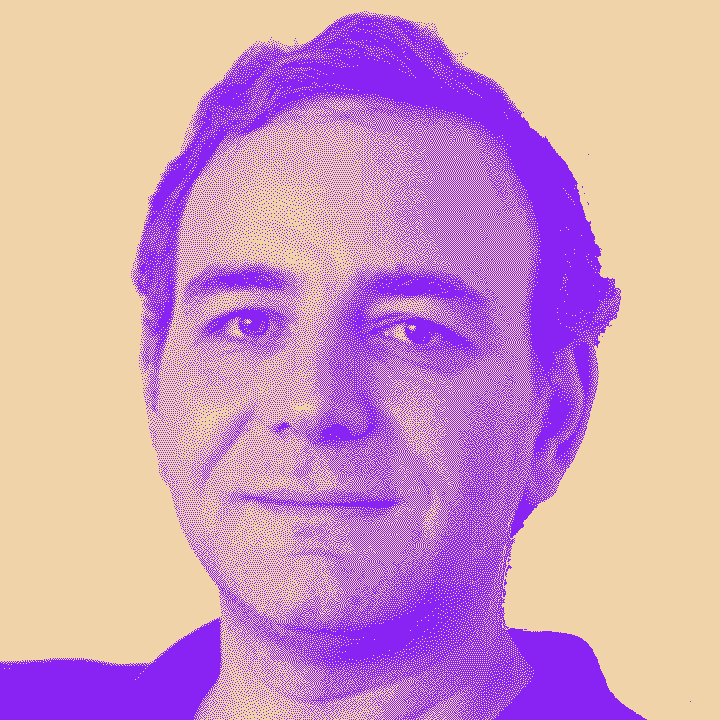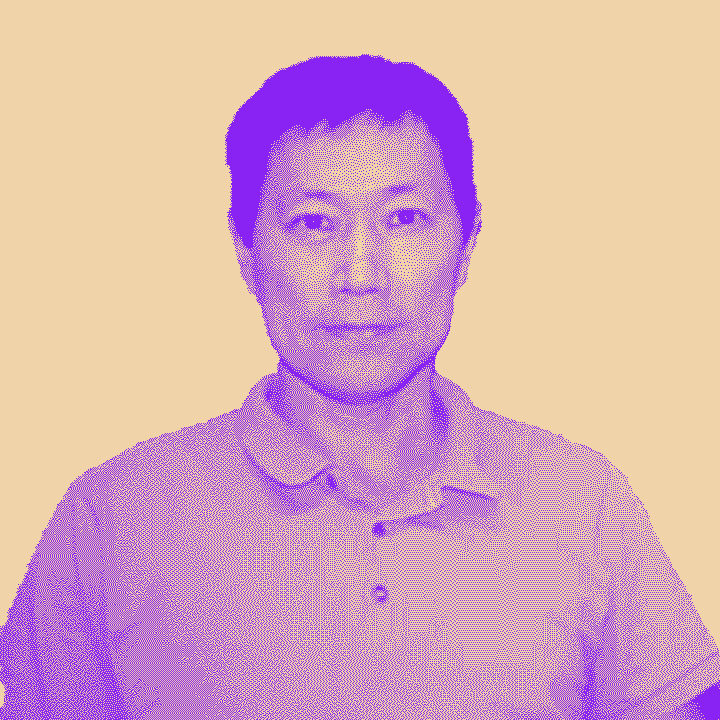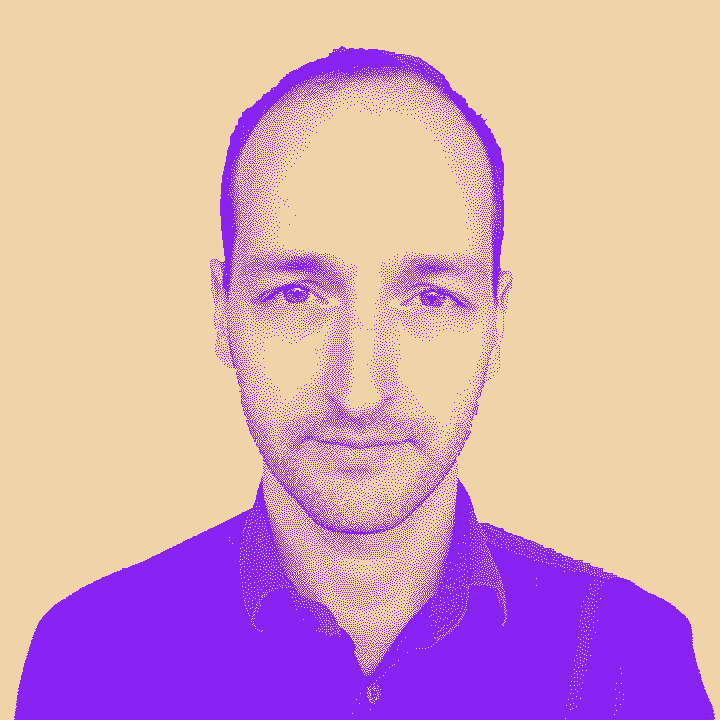
Monday, May 31st
21
TS-L-MON-01-01
High Intensity ultrashort laser pulses and their applications at IPEN
Ricardo Samad (IPEN); Edison Puig Maldonado (ITA); Wagner de Rossi (IPEN); Nilson Vieira (USP)
► 14:30 to 15:15 · Hall C · Tutorial Session 1
In this work recent developments on high-intensity ultrashort laser pulses will be presented.

Ricardo Samad (IPEN)
22
TS-L-MON-01-02
An Overview on Laser Shock Peening Process: From Science to Industrial Applications
Alexandre Cunha (SENAI)
► 15:20 to 16:05 · Hall C · Tutorial Session 1
The surface of a material plays an important role in the behavior of engineered components. Surfaces are subjected to treatments in order to enhance the material performance by modifying and controlling its physical properties. In particular, modification of mechanical properties affects the wear and corrosion resistances, fatigue strength and, therefore, the component’s service lifetime. In this scenario, peening processes are employed on different industrial sectors. The term “peening” originates from the act of hitting a metallic surface with the ball-peen end of a hammer. In history, blacksmiths have used this procedure to forge weapons and tools. In the modern industry, the technique has evolved to shoot metal or ceramic particles on the metal surface....

Alexandre Cunha (SENAI)
23
TS-L-MON-01-03
Electron beam properties in self-modulated laser wakefield acceleration using TW and sub-TW pulses
Edison Puig Maldonado (ITA); Ricardo Samad (IPEN); Alexandre Bonatto (UFCSPA); Roger Pizzato Nunes (UFRGS); Sudeep Banerjee (Arizona State University); Nilson Vieira (IPEN)
► 16:10 to 16:55 · Hall C · Tutorial Session 1
We review the fundamentals of electron beam generation in the self-modulated laser wakefield acceleration for the case of laser pulses with peak powers on the TW and sub-TW scale. The results of particle-in-cell simulations for λ = 0.8 μm and a thin H2 gas target are shown. By scanning the peak gas density values and the peak power of the incident laser, we discuss the resulting acceleration processes, as well as the characteristics of the electron beams generated for different conditions. Our approach provides a method to optimize these beams with lasers that operate at kHz repetition rates.

Edison Puig Maldonado (ITA)
24
TS-O-MON-01-01
Femtosecond pulses for nonlinear optics: Temporal, spectral and polarization dependence studies
Lino Misoguti (USP)
► 14:30 to 15:15 · Hall C · Tutorial Session 2
Due to their unique properties, femtosecond laser pulses have many applications in several areas of applied optics. In nonlinear optics, for instance, the broad bandwidth, high intensity and short pulse duration are explored by several experimental techniques to improve the understanding of nonlinear optical effects. Nowadays, thanks to the tunable laser pulses, it is possible to determine the spectral response of several materials’ nonlinear effects. Moreover, among the study of response time of ultrafast phenomena, we can use these pulses with appropriate experimental method and laser polarization state to discriminate the origin of nonlinear effects. As it is known, an effective nonlinear optical signal can arise from different origins such as nearly...

Lino Misoguti (USP)
25
TS-O-MON-01-02
New Test and Measurements concepts in 800G and Terabit communications
Rodrigo Vicentini (Keysight)
► 15:20 to 16:05 · Hall C · Tutorial Session 2
With the 5G recent introduction in the market, higher speed computing and communications demand new technologies. As usual, the data rates on both data center and optical coherent systems environment evolve and require new simulation tools and laboratory testers. During this lecture we will cover about the new test and measurements technologies around 400G and 800G data rates, and the Terabit communications for the systemic analysis perspective.

Rodrigo Vicentini
26
TS-O-MON-01-03
Hand-held photoacoustic imaging systems for biomedical applications
Theo Zeferino Pavan (USP)
► 16:10 to 16:55 · Hall C · Tutorial Session 2
Photoacoustic imaging (PAI) can provide physiological and anatomical information by combining optical absorption contrast with ultrasound spatial resolution and can be obtained up to a depth of a few centimeters. In PAI, short pulses of light are absorbed by the tissue, causing a local thermal expansion and subsequent acoustic wave emission. Hand-held PAI systems usually operate in reflection mode, where optical illumination and acoustic detection are arranged on the same side. In this talk, I will give an overview of different strategies for both optical illumination and acoustic detection reported for hand-held devices. A more detailed description will be provided for strategies involving linear-array transducers, which are commonly used in clinical...

Theo Zeferino Pavan (USP)
Tuesday, June 1st
56
TS-S-TUE-01-01
Sensors based on plasmonic devices and nanostructures, Part 1
Isabel C. S. Carvalho (PUC-Rio)
► 14:30 to 15:15 · Hall C · Tutorial Session 1
Plasmonic devices and nanoparticles have been widely used in the last decades for the development of optical sensors with application in different scientific areas, spanning from biology to material science. In this tutorial, we will show the state of art of plasmonic sensors based on both Localized Surface Plasmon Resonance (LSPR) ( Part1) and Surface Plasmon Polariton (SPP) (Part 2) applied to (bio-)molecular interactions, radiation sensing and characterization of organic and nanoparticle thin films

Isabel C. S. Carvalho (PUC-Rio)
57
TS-S-TUE-01-02
Sensors based on plasmonic devices and nanostructures, Part 2
Tommaso Del Rosso (PUC-Rio)
► 15:20 to 16:05 · Hall C · Tutorial Session 1
Plasmonic devices and nanoparticles have been widely used in the last decades for the development of optical sensors with application in different scientific areas, spanning from biology to material science. In this tutorial, we will show the state of art of plasmonic sensors based on both Localized Surface Plasmon Resonance (LSPR) ( Part1) and Surface Plasmon Polariton (SPP) (Part 2) applied to (bio-)molecular interactions, radiation sensing and characterization of organic and nanoparticle thin films.

Tommaso Del Rosso (PUC-Rio)
58
TS-S-TUE-01-03
Nanofluids for Direct Absorption Solar Collector and Solar Desalination
Diego Rativa (UPE)
► 16:10 to 16:55 · Hall C · Tutorial Session 1
The amount of energy radiated by the sun in one hour is much higher than the energy used by all human beings in a year. The average annual horizontal radiation in the Brazilian semi-arid region is more than 2,000 kWh/m2, which, together with low precipitations, convert the region into the most populous dry region of the earth, where making the threat to water a constant factor due to droughts' repeated occurrence. Solar collectors are simple devices that usually employ a fluid circulating in a network of tubes working as heat receptors. One way to enhance the energy transfer efficiency is to use a working fluid with optical properties to directly absorb the solar radiation, usually called Direct Solar Absorption Collector (DSAC). In the last decade,...

Diego Rativa (UPE)
59
TS-C-TUE-01-01
Advanced Forward Error Correction for Optical Fiber Communications
Vahid Aref (Nokia Bell Labs)
► 14:30 to 15:15 · Hall C · Tutorial Session 2
Forward Error Correction is an essential element of today’s digital communication systems to guarantee reliable data transmission. Modern high-speed optical communication systems require high-performing FEC engines with low power consumption that support throughput of multiples of 100 Gbit/s, achieving Net Coding Gains (NCGs) close to the theoretical Shannon limits at a target Bit Error Rate (BER) of 1e-15.
In this tutorial, we overview the state-of-the-art FEC schemes for fiber-optic communications, namely spatially coupled LDPC codes, oFEC and the staircase codes. The last two FEC schemes are already standardized for OpenZR+ and OIF 400G-ZR. We explain that these elaborate FEC schemes have a common feature leading to their high NCGs. They are...

Vahid Aref (Nokia Bell Labs)
60
TS-C-TUE-01-02
Elastic Optical Networks
Helio Waldman (Unicamp)
► 15:20 to 16:05 · Hall C · Tutorial Session 2
In elastic optical networks (EON’s), the old fixed wavelength grid is replaced by a flexible grid of contiguous 12.5 GHz frequency slots. Each connection is assigned a tight integer number of such slots that is customized according to the requested bitrate and distance. A spectrally efficient modulation format is then chosen to provide connectivity with zero margin. <br><br> The motivation behind EON’s is the efficient use of optical spectrum. However, heterogeneity of the (bitrate, distance) demands over translucent networks means that rectangular objects with different shapes must now be dynamically assigned on a mesh of routes made from 320-slot links. Spectral fragmentation losses may then frustrate a large part of the gains awarded by...

Helio Waldman (Unicamp)
61
TS-C-TUE-01-03
Security in Optical Communication Systems: Data Encryption and Beyond
Marcelo L. F. Abbade (UNESP)
► 16:10 to 16:55 · Hall C · Tutorial Session 2
Opical communication systems (OCSs) are prone to a myriad of security threats, such as fiber cutting, tapping, and jamming. However, OCSs also provide appropriate conditions for the exchange of encryption keys by quantum-based approaches and for the emergence of signal encryption. Both these strategies may lead to unprecedented levels of security. In this paper, we present a brief review on the security menaces and opportunities related to OCSs. Encryption-based solutions receive special attention.

Marcelo L. F. Abbade (UNESP)
Wednesday, June 2nd
91
TS-I-WED-01-01
How to develop your PIC-based product – from prototype to production
Giovanni Farias (VLC Photonics, Spain)
► 14:30 to 15:15 · Hall C · Tutorial Session 1
Photonic Integrated Circuits technologies bring several advantages compared to traditional bulk products that are based on discrete components. In this tutorial, the workflow for the development of products based on Photonic Integrated Circuits (PIC) will be presented. The steps of a full development cycle, from system concept to test and packaging will be reviewed. The PIC platforms available for fabrication will be presented and compared, and their maturity will be discussed. Finally, a discussion about the Technology Readiness Levels (TRLs) and the requirements for each step, from prototype to pre-production will be made.

Giovanni Farias (VLC Photonics, Spain)
92
TS-I-WED-01-02
Brillouin optomechanics nanophotonic structures
Thiago Alegre (Unicamp)
► 15:20 to 16:05 · Hall C · Tutorial Session 1
The interaction between light and mesoscopic mechanical degrees of freedom has been investigated under various perspectives, from long-haul optical fiber communication system penalties to gravitational-wave detector noise. In the context of integrated photonics, two topics with dissimilar origins — cavity optomechanics and guided wave Brillouin scattering — are rooted in the manipulation and control of the energy exchange between trapped light and mechanical modes. In this talk, I will review some of the key aspects of this interaction and how to use fine control over the design and fabrication of microstructures to control both the optical and acoustic spectra to shape such interaction.

Thiago Alegre (Unicamp)
93
TS-I-WED-01-03
Custom manufacturing of photonic ICs
Roberto Panepucci (CTI)
► 16:10 to 16:55 · Hall C · Tutorial Session 1
This is a review tutorial on the custom fabrication of photonic integrated circuit devices. It is geared towards researchers with an interest in designing photonic devices and circuits that take advantage of silicon-based CMOS technologies, and more generally of foundry services as a platform for customizing their ideas. The audience will be exposed to: photonic device basics, material properties, actuation strategies, physical design, fabrication aspects and testing of photonic devices. Our goal is to provide a starting point for the interested reader to take advantage of so called ´foundry´ runs or multi-project-wafer runs to gain access to state-of-the-art capabilities as a platform in which to add new materials, structures and innovation.

Roberto Panepucci (CTI)
94
TS-B-WED-01-01
Protoporphyrin IX: An Endogenous Theranostic Compound
Lilia Courrol (UNIFESP)
► 14:30 to 15:15 · Hall C · Tutorial Session 2
Porphyria, cancer, and atherosclerosis patients manifest increased concentration of protoporphyrin IX (PpIX) in tissues and blood, and PpIX fluorescence can be used to diagnose these diseases. This review will describe the role of PpIX inside the cells and organisms. Diagnosis and therapy approaches using PpIX will be described. Finally, we will also evaluate if PpIX could be used to diagnose and treat Covid-19 since an abnormal phenomenon related to hemoglobin dysfunction was observed in the patients with this disease

Lilia Courrol (UNIFESP)
95
TS-B-WED-01-02
Machine Learning methods for micro-FTIR imaging classification of human skin tumors
Denise Zezell (IPEN)
► 15:20 to 16:05 · Hall C · Tutorial Session 2
This review presents some methods applied to micro-FTIR imaging for classification of human skin tumors. It is a collection of the pre-processing pipeline and machine learning classification models. The aim of this review is to update and summarize the current methods which are applied in our skin tumor research.

Denise Zezell (IPEN)
96
TS-B-WED-01-03
Antimicrobial Photodynamic Therapy
Cristina Kurachi (USP)
► 16:10 to 16:55 · Hall C · Tutorial Session 2
Antimicrobial photodynamic therapy (aPDT) uses the combination of photosensitizer, light and oxygen to induce microorganism death for the local treament of infected tissues. Its mechanism of action is based on the production of reactive species, mostly singlet oxygen, resulting in the oxidative damage of any biomolecule nearby where the photosensitizer is located. If minimal conditions of local photosensitizer and oxygen concentrations and light dose are achieved, microorganism inactivation is induced. One of the main advantages of aPDT is due to its action being non-biological site specific, so inactivation of distinct species of bacteria, fungi and virus are observed, and antimicrobial resistance is highly unfeasible. Examples of aPDT applications will be...

Cristina Kurachi (USP)
The Brazilian Photonics Society has begun its activities on May 24th, 2017 with the main objective to work for increasing the importance and awareness of optics and photonics in Brazil and South America.
To contact SBFoton and take active part in this movement, send an email to conference@sbfoton.org.br.
This event’s visual identity was designed by Preface.